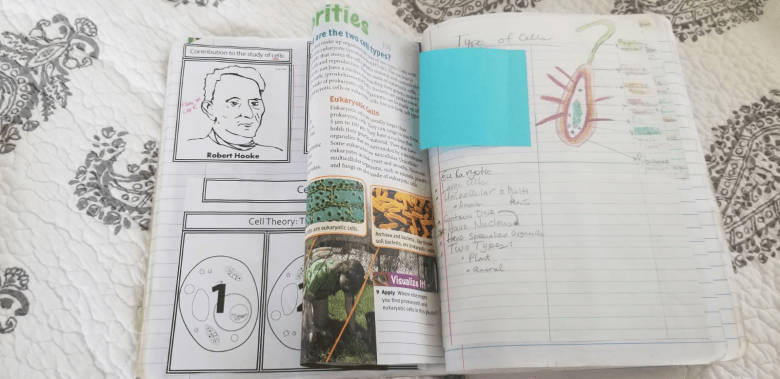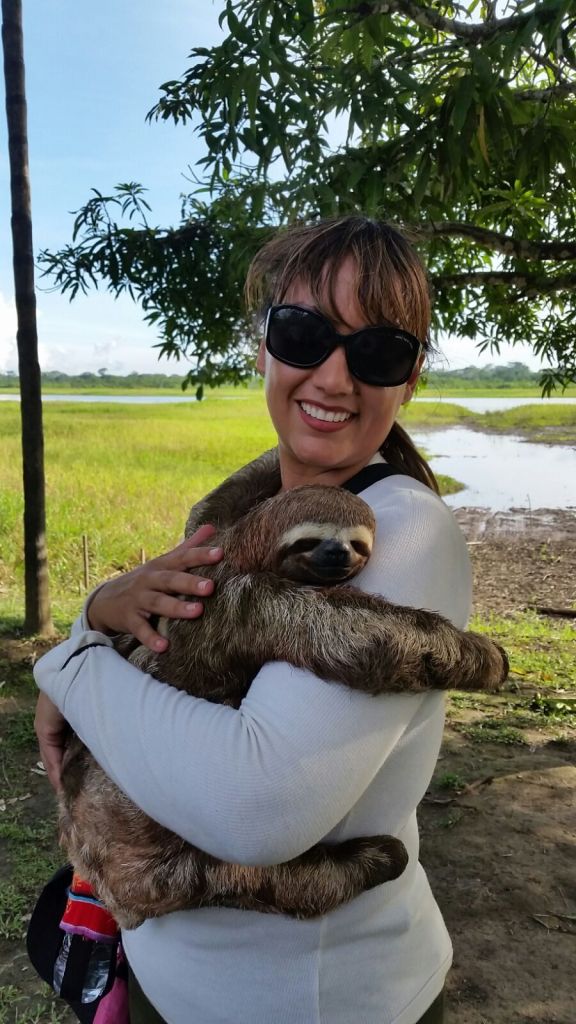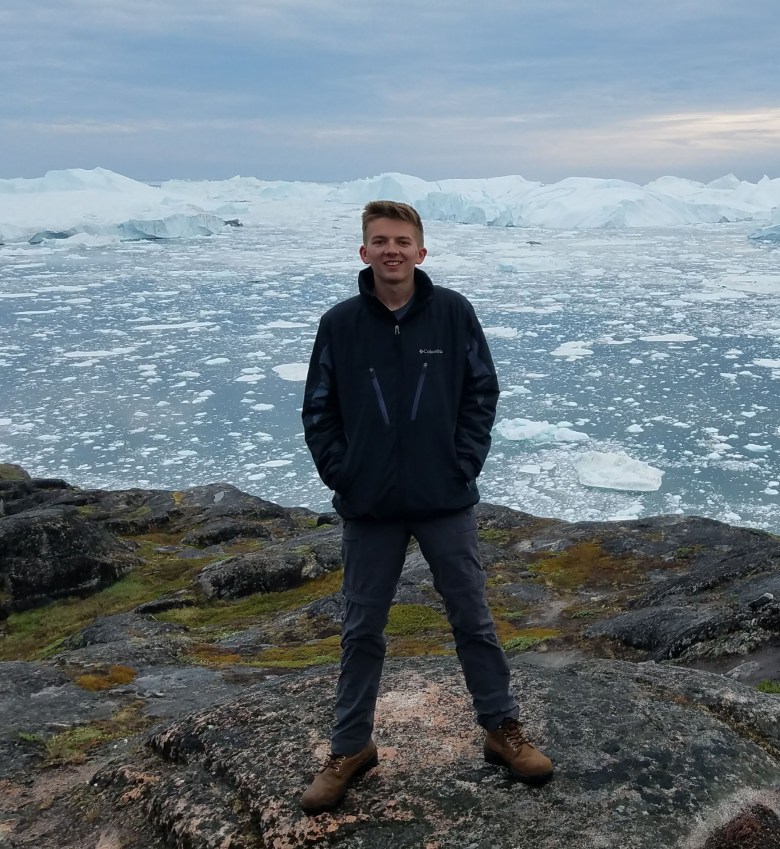This story about climate change and education was produced as part of the nine-part series “Are We Ready? How Schools Are Preparing – and Not Preparing – Children for Climate Change,” reported by HuffPost and The Hechinger Report, a nonprofit, independent news organization focused on inequality and innovation in education.
Science textbooks used in Florida and Texas call climate change “one of the most debated issues in modern science.” A Texas science textbook for seventh graders says “scientists hypothesize” that the increase in carbon dioxide “has contributed to the recent rise in global temperature.”

A high school social studies book, also used in Texas, says of rising temperatures, “Some critics say that this warming is just part of the Earth’s natural cycle,” though, in truth, there’s overwhelming consensus among climate scientists that the current warming is due to human activities.
Such descriptions of climate change are muddled and misleading, according to four climate scientists who reviewed them as part of a Hechinger/HuffPost analysis of 32 middle school and high school textbooks and digital curricula and what they say on the subject.
In the review of the 32 textbooks, which are used in California, Florida, Oklahoma or Texas, we found that at least 12 included descriptions of climate change that were superficial or contained errors. Another four of the science books did not discuss the topic at all. And some downplayed the scientific consensus that human activities are causing the current climate crisis, according to the four experts who reviewed the passages for Hechinger/HuffPost, although they had varying perspectives on the extent of those problems.
“What many of the texts have done is to give the few contrarian voices with their loud megaphones a much greater voice in the text than is warranted based on the science and the assessments of the various national academies of science and the Intergovernmental Panel on Climate Change,” Richard Alley, a professor in the Department of Geosciences at Penn State who studies climate change, and who was most critical of the textbooks, wrote in an email.
Kerry Emanuel, a professor of atmospheric science at the Massachusetts Institute of Technology, wrote that many of the texts “at least tried to get the science right” on climate change and most errors were minor, but “in a few cases, it was fairly clear that there was little interest in conveying a scientifically correct account, or worse, an active intent to deceive.”
Are We Ready?
This nine-part series explores how we’re teaching through climate change. We report on how climate change emergencies are disrupting student learning, exacerbating mental health problems, devastating school infrastructure, and how the coronavirus pandemic is a preview of what education looks like in a climate emergency. We also look at how textbooks are coming up short in teaching kids about climate, how medical schools are preparing future doctors, and how despite the obstacles some educators are finding ways to give students skills they need to better protect themselves and their communities.
High school students have become an increasing force in climate change activism; in 2019, hundreds of thousands of young people skipped school and took to the streets to protest the climate crisis in a global strike. But in the United States, many of the textbooks they use in class barely scratch the surface of the tremendous obstacles their generation will face on this issue.
Misleading language
Some of the textbooks also introduce confusion about the causes of climate change, according to the four experts, who in addition to Alley and Emanuel included scholars at Texas A&M and the University of California San Diego.
“Scientists hypothesize that this rise in [carbon dioxide] has contributed to the recent rise in global temperature,” reads a passage from TEKS iScience Grade 7, the Texas version of a McGraw Hill book published in 2015.
“ ‘Hypothesize’ is too weak,” one expert wrote. “It’s much stronger than a hypothesis,” wrote another.
The eighth grade version of the same book says some of the increase in carbon dioxide is due to human activities, when nearly all of it is caused by the burning of fossil fuels and other human actions, the experts wrote.

And a passage that appears in a 2019 Houghton Mifflin Harcourt sixth grade science textbook used in Florida and in a 2015 sixth grade science book used in Texas calls climate change “one of the most debated issues in modern science.”
Emanuel, of MIT, wrote in response: “The evidence for human-induced climate change is now unequivocal, and there is no debate about it within climate science.”
The rest of the passage from the Houghton Mifflin Harcourt book talks about recent warming and also mentions that evidence from the geologic record shows that Earth’s climate has experienced even larger changes in the past. That language is misleading, according to the experts we contacted, because it minimizes the overwhelming scientific evidence that humans are responsible for present-day climate change and suggests that the wide variations in climate before human civilization bring into question the role of human activities in the current warming.
Those two phenomena are not comparable, they noted, because the previous climatic changes happened over a vastly different time span – many hundreds of thousands of years versus a few decades.
The experts raised similar concerns about a Houghton Mifflin Harcourt social studies book, Texas World Geography, which they said gave undue weight to critics who suggest that the current warming is due to the Earth’s natural cycle. “What the critics are saying is factually inaccurate,” wrote one reviewer. Others said that the passage’s description of greenhouse gases was flawed.
Houghton Mifflin Harcourt said in an emailed statement that the issues raised by the Hechinger/HuffPost analysis “are important, and our teams are constantly working to evolve and improve our content.” The company said it believes “the topic of climate change is a critically important one” and its newer editions “reflect current settled science regarding climate change.” The publisher also noted that the content of textbooks is responsive to science instruction standards set by the states in which the books are sold.
In an emailed statement, McGraw Hill also noted that its books are designed to comply with state instruction standards and that the texts we reviewed were several years old. “The development process includes ongoing opportunities to validate and update our content for new editions, based on academic scholarship and changing curriculum standards,” the company said. “The information presented was based on the most current research available at the time.”
Meanwhile, the state review process for textbooks has in some cases kept problematic texts from entering classrooms. One of the Texas social studies books we examined said that “scientists do not agree on what is causing” climate change and ran side-by-side passages from a United Nations group and the Heartland Institute, a think tank that promotes climate change denialism.
“Scientists who study the issue say it is impossible to tell if the recent small warming trend is natural, a continuation of the planet’s recovery from the more recent ‘Little Ice Age,’ or unnatural, the result of human greenhouse gas emissions,” the Heartland passage stated. McGraw Hill, the book’s publisher, noted that the book (which we purchased online) was a review copy; the particular passage had been revised after science and environmental groups raised objections to it.
And their critiques notwithstanding, some of the reviewers said the books were better than they had anticipated. Andrew Dessler, professor of atmospheric sciences at Texas A&M, wrote in an email that he had “expected to see a lot more of ‘some scientists say the climate is warming, but others say it’s not’ … or some similar both sider-isms.”*
Limited information
New standards that were unveiled in 2013 to modernize how science is taught directed schools to introduce students to climate change and how human activities influence warming beginning in middle school. But not every state has adopted the standards.
Texas, which because of its market size plays an influential role in shaping the content of textbooks even beyond its borders, is one of six states that develops its own curriculum standards, while 20 follow the national guidelines and another 24 have adopted modified versions. Meanwhile, even textbooks that are designed to be sold in states that follow the 2013 guidelines, known as the Next Generation Science Standards, have been slow to catch up.
The 32 print and digital books we examined were published between 2012 and 2020, although most – some 84 percent – were released in 2015 or later. In the 24 print science books we reviewed, the topic of climate change was described on a median of twopages, per their indexes. (Notably, we looked specifically at the types of science textbooks in which climate change is likely to appear.)
Of 28 books that did discuss climate change, more than two-thirds mentioned the role of humans in causing or contributing to it. About half of all the science books talked about the consequences of climate change – such as sea-level rise, worsening wildfires and hurricanes and species loss – in a detailed way.
With so much information available online, many teachers report that regardless of the subject, they rely little on textbooks and prefer to design their own materials. When it comes to climate change, teachers say they often turn to outside sources because the information in textbooks is so limited.

Beatriz López taught seventh grade science in the Lake Travis Independent School District, in Austin, Texas, from 2008 to 2017. When the Texas State Board of Education last approved a list of science textbooks in 2013, López and some of her colleagues in the district reviewed the selected books.
She wasn’t particularly impressed with many of the offerings, she recalled, and her district ultimately picked the teachers’ third-choice book because their favorites were too expensive. That book, a Houghton Mifflin Harcourt publication called Texas ScienceFusion, mentions climate change once, in a single paragraph.
“Long-term climate change can cause gradual and more permanent changes to ecosystems,” the book says. “Warming temperatures can melt ice in polar regions, destroying habitats for animals, such as polar bears. Changes in climate can also alter weather patterns, causing drought in some ecosystems and flooding in others.”
There’s nothing factually inaccurate about that passage, according to the Hechinger/HuffPost reviewers. But the information is woefully brief, said López. “There’s no development,” she said. “It’s like an introduction to an essay.”
López said she and her colleagues essentially created their own textbooks, using scissors to cut out useful information from the books and pasting it together with materials they found from online resources or that they created themselves. They also worked with the district to win approval for a bespoke curriculum that would be responsive to the state standards, known as the TEKS, but that would allow them to cover important, cross-disciplinary subjects such as climate change.
“They don’t have the perspective that they need to have for a high understanding of what climate change is and how what happens today can impact the future,” López said of students in Texas. “Teachers need to find their own ways of teaching that topic because the books and TEKS are not doing it.”
Her former student Ryan Hammock, who graduates this month from the University of Texas at Austin, said he agreed. He said he didn’t recall anything about climate change in his middle school and high school textbooks except the book for his Advanced Placement environmental science class, because the topic was part of the AP standards. As president of the university’s Climate and Meteorology Society, Hammock said he often met freshmen who arrived on campus without knowledge of climate change because they hadn’t been introduced to it in school.

Science standards
Part of the issue goes back to the science standards. In Texas, all textbooks and standards are approved by the state education board, whose 15 members are elected and rarely have subject-matter expertise. The board is gearing up for a new review of standards this fall, followed by an update of textbooks. The last time it comprehensively updated the curriculum standards was 2009, under the leadership of a board chair who told the Austin American-Statesman newspaper that evidence for human-caused global warming was “a bunch of hooey.”
The middle school standards do not mention climate change or global warming. The terms are included three times each in the high school standards, but they are less direct about the human role in warming than the national guidelines. One provision, in particular, has drawn criticism since its approval. It instructs teachers and students to “analyze and evaluate different views on the existence of global warming,” a both-sides approach that environmental groups say ignores the overwhelming consensus on human-made causes of climate change.
Because of the lack of guidance by the state and in textbooks, some teachers find it easier just to ignore the topic than to wade into a controversial area, said John Mead, another science teacher in Texas. Mead teaches at a private school where he is given the freedom to explore climate change in depth. However, he mentors teachers around the state who say they’re fearful of broaching the issue. Some teachers tell him they don’t even feel well versed enough in climate science to pass on any expertise to students.
“The only way we can learn about the climate and things that are going on is if you on your own decide to do reading or Google or look at the presidential Democratic candidate debates.”
Perla Gonzalez, junior, Mission High School, Texas
“Climate change is effectively absent from our state standards, so teachers who are not inclined can easily avoid it,” said Mead, a teacher at Saint Mark’s School of Texas in Dallas. “It’s very common to face backlash in the classroom.”
Dan Quinn, research director and press secretary of the Texas Freedom Network, an advocacy group that was founded to challenge the influence of the religious right in state politics, calls the standards a “muddled mess when it comes to climate science.” “Politics trumps facts and sound scholarship when it comes to developing curriculum standards, particularly on issues that are considered controversial like climate change,” he said.
Quinn, who previously worked as an editor for a textbook company, said publishers try to tailor their offerings to comply with state standards and avoid including information that would attract scrutiny.
“They know they have to get their textbooks adopted through a political process and the way to do that is to make sure nobody hates your textbook, certainly not the people who are voting on it,” said Quinn. “You word passages in a way that you hope is not inaccurate but doesn’t spark a controversy or a debate, because the last thing you want as a sales rep is a debate over your textbook.”
Marisa Perez-Diaz, one of five Democrats on the state education board, said that while the board works congenially, there are competing views on topics including climate change. “I would absolutely love to see our TEKS be more direct and clear about what impact human interaction with the environment has had on climate change,” she said.
One of her colleagues on the board, Barbara Cargill, a Republican, wrote in an email that textbooks in the state are carefully vetted to follow the TEKS, which do mention climate change, and that teachers may choose to go into more detail on the topic depending on their school district’s curriculum requirements.
In our review of textbooks, there were not always clear differences by state in terms of textbook content. But California, which follows the Next Generation Science Standards, went further than many states in adding guidance on climate change in its expectations around implementing the standards. Some textbooks designed for the state depart from their Texas versions or similar offerings in terms of how much information they include on climate.
Amplify, a New York-based curriculum company, designed its blended digital and print science curriculum around the new national standards and has national, California and Louisiana versions only. A PDF of its 2018 California edition for sixth through eighth graders shows that climate change is mentioned more than 600 times.
The teacher version of a 2020 Pearson California sixth grade science textbook discusses climate change on at least 25 pages, far more than most of the print books we reviewed. And while the 2015 Texas edition of the Pearson high school biology textbook discusses climate change, the latest California version, published in 2019, goes into considerably more detail, say its co-authors, Joe Levine and Ken Miller.
“Politics trumps facts and sound scholarship when it comes to developing curriculum standards, particularly on issues that are considered controversial like climate change.”
Dan Quinn, Texas Freedom Network
The California state standards provided “a clear signal to us that we could include as much material on climate change as we thought was scientifically appropriate,” the authors wrote in an email. (In an emailed statement, Pearson said the company often creates “custom editions of our textbooks” to meet state requirements but that the Texas and California high school versions are not an “apples-to-apples comparison” because of the different time frames in which the books were published and the different approaches to high school science.)
Miller and Levine recalled that in preparing the first edition of the biology textbook for publication in 1990 they were told by a few members of the marketing staff that evolution was a sensitive topic and were asked to go light on it. “We basically said no,” said Miller, a biology professor at Brown University. Since then, they said, their publisher has tried to make the book’s scientifically accurate, uncompromised information – on evolution, climate and other topics – a selling point.
Still, Texas’ textbook approval process has been a headache at times. In 2013, the state board delayed approval of the Miller and Levine biology textbook because one reviewer complained that it described evolution as a fact, not a theory. The authors said they had not faced similar challenges with respect to climate change.
At the same time, publishers in general have been sluggish to adjust to the new national science standards, which mark a big departure from previous approaches to science education. Of 10 middle school publications and digital books reviewed by the nonprofit EdReports, only one received a stamp of approval for meeting the expectations of the 2013 guidelines, which encourage critical thinking and hands-on, cross-disciplinary approaches to learning.
Learning about climate change outside the classroom
And it’s not only in Texas that teachers feel hamstrung by their textbooks, politics and other concerns around teaching climate change. Climate science is complicated, and many teachers say they don’t have as much knowledge as they’d like to feel confident teaching it.
It wasn’t until Alison Wood, a 10th grade biology teacher in Duluth, Minnesota, attended a multiday teacher training on the subject several years ago – after teaching in her district for 20 years – that she felt armed with the knowledge to effectively teach climate change. The textbooks she received at the time were “super lame,” she said, and the topic wasn’t yet in her state’s standards, so it was often mentioned as an afterthought at the end of the year. She still relies on a hodgepodge of resources rather than textbooks.
“Climate change is effectively absent from our state standards, so teachers who are not inclined can easily avoid it.”
John Mead, teacher, Saint Mark’s School of Texas
“It was one of those topics where it was like, ‘Huh, we ran out of time this year, I guess we didn’t get to it again,’ ” said Wood. “It’s straightforward to talk about DNA or cells, but to talk about human impact on climate change?”
Young people, meanwhile, are increasingly learning about climate change outside the classroom. And for some of them, the politicization of climate science and the near absence of climate change from their courses and textbooks are frustrating.
Perla Gonzalez, who is finishing her junior year at Mission High School, in South Texas, said she didn’t recall learning much at all about climate change in school – just something about the water cycle in elementary and a little about fracking in middle school.
“The only way we can learn about the climate and things that are going on is if you on your own decide to do reading or Google or look at the presidential Democratic candidate debates,” she said.
She said that while her teachers are relatively progressive and care about the environment, climate change doesn’t fit into any planned lessons. “We’re not allowed to talk about it in class because it’s not part of the curriculum,” she said. “I would love to see that change.”
Taylor Roberson, a junior at Cypress Creek High School, near Houston, said she thinks Texas’ conservative politics have limited how much she and her classmates can talk about climate change.
“Climate education really isn’t high on the list of a lot of people’s issues with the school system currently,” she said. “It’s never really put to thought, which means it won’t make it into our TEKS, and a lot of teachers, if they don’t see things on the TEKs, then they don’t feel the need to teach it.”
“In a few cases, it was fairly clear that there was little interest in conveying a scientifically correct account, or worse, an active intent to deceive.”
Kerry Emanuel, professor, Massachusetts Institute of Technology
She added: “I 100 percent wish we would learn more about climate change and climate issues in general in our science classes.”
López, the former middle school teacher in Austin, Texas, moved back to Puerto Rico, where she grew up, in August 2017. She’s now working as an education consultant.
A few weeks after she moved, Hurricane Maria struck, devastating the island. López had witnessed hurricanes in her youth, but she said the recovery was a few weeks, nothing like the months that Puerto Rico spent off the grid in 2017. After the disaster, the high school she graduated from was forced to close, along with hundreds of others.
On the island, López said, climate change and its effects feel omnipresent. It troubles her that many students aren’t getting an opportunity to learn much about it.
“If they don’t have education and they don’t have an understanding of their impact on the environment,” she said, “nothing is going to change.”
*Correction: This story has been updated to correct the spelling of Andrew Dessler’s surname.




“… publishers try to tailor their offerings to comply with state standards and avoid including information that would attract scrutiny.”
Pretty much sums it up.
In the South, numerous school districts and state education agencies are actively mandating that social studies textbooks contain revisionist history about topic such as the Civil War, Great Depression, and racial segregation.
And their life science curriculum is required to discuss Intelligent Design as a valid alternative theory to Natural Selection.
It should come as no surprise that climate change is ignored, deemphasized, or even described as some type of controversial hunch presented by globalists with alternative motives.